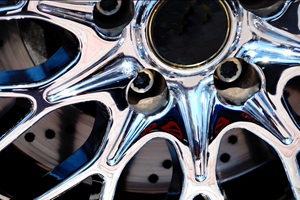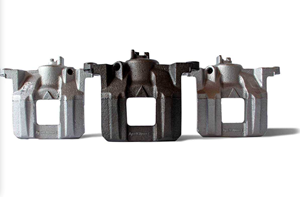Plating Q&A: Post-Plate Flaking Issue
We experienced issues with flaking after the parts were plated and sent for additional mechanical alterations.
Q. We are plating brass pieces with bright nickel in a basic Watt’s solution using proprietary additives. A trivalent chromium coating is applied on top of the nickel. We experienced issues with flaking after the parts were plated and sent for additional mechanical alterations. This is when the metal deposit flaked off. How do we fix this?
A. Your flaking issue might not be entirely related to stress. This is important to determine when dealing with bright nickel and can reveal other issues that may not be as obvious at first glance. Flaking often occurs when there is poor adhesion, poor ductility or when the pretreatment cycle fails to properly prepare a part. A stress analyzer helps to understand the problem beyond the information rendered from generic titrimetric analyses or Hull cell examinations.
Stress in a deposit can be tensile or compressive. If the deposit is tensile, it will curl in on itself, and if compressive, it will curl toward the substrate. Stress occurs because of some type of grain deformation, often because of improper material components such as hydrogen, sulfur, carbon, suspended colloids or extraneous particulate, which disrupt the formation of the metallic atoms.
An excess of Class II brighteners and a lack of Class I brighteners (carriers) might also cause flaking. Class I brighteners often impart a small amount of sulfur into the deposit and are often responsible for brightness (grain refinement), ductility and compressive stress, reducing the tensile stress of the deposit. Class II brighteners incorporate carbon into the deposit, increasing the tensile stress.
To decrease the total organic content, you should improve the way platers carbon-treat baths both on a continuous and batch level. Operators should investigate all treatment options to remove unwanted organic contaminants. For instance, adjusting the temperature of the solution down to 100–110°F in the auxiliary tank, because higher temperatures of the nickel bath reduce the effectiveness of the hydrogen peroxide additions in oxidizing the organics.
The optimal level of stress can be achieved when the pH is in the range of 3.6–4.2. To avoid large pH swings, sustain a sufficient level of boric acid concentration (6.5–7.5 opg) and recognize that too much can cause the boric salts to precipitate out on the anodes. Too little chloride will reduce solution conductivity and anode dissolution, and too much will induce a high level of tensile stress. Low temperatures can also increase stress, so maintain the bath between 140 and 150°F.
Copper, zinc, cadmium and other metals at low levels can cause stress or ductility issues. Metallic purifiers can improve ductility and reduce stress by preventing tramp metals from interfering with the nickel deposition process. The purifiers filtrate, regulate and restrain the brighteners to limit their involvement with the reaction. Suppressing the carbon in the deposit can reduce tensile stress. Low current density treatment using dummy cathodes can rid the bath of a large amount of metal cations. Stress analyzers can provide information about a bath that might not have been considered.
Adam Blakeley is a technical service representative for MacDermid. Contact him at adam.blakeley@macdermid.com.
Originally published in the March 2016 issue.
Related Content
3 Tests to Ensure Parts are Clean Prior to Plating
Making sure that all of the pre-processing fluids are removed prior to plating is not as simple as it seems. Rich Held of Haviland Products outlines three tests that can help verify that your parts are clean.
Read MoreA Chromium Plating Overview
An overview of decorative and hard chromium electroplating processes.
Read MoreAn Overview of Electroless Nickel Plating
By definition, electroless plating is metal deposition by a controlled chemical reaction.
Read MoreRead Next
Episode 42: An Interview with Robin Deal, Hubbard-Hall
Hubbard-Hall wastewater treatment specialist Robin Deal discusses the latest trends in wastewater management.
Read MorePowder Coating 4.0: Smarter, Faster, More Efficient and Connected
New tools reduce cost and waste, lower manufacturing footprint of powder coating operations.
Read MoreThe 2024 Ford Mustang: All the Colors Available
Although Chevrolet has announced the end of the Camaro and Dodge is offering “Last Call” editions of the Charger and Challenger, the Ford Mustang is launching to its seventh generation.
Read More

























